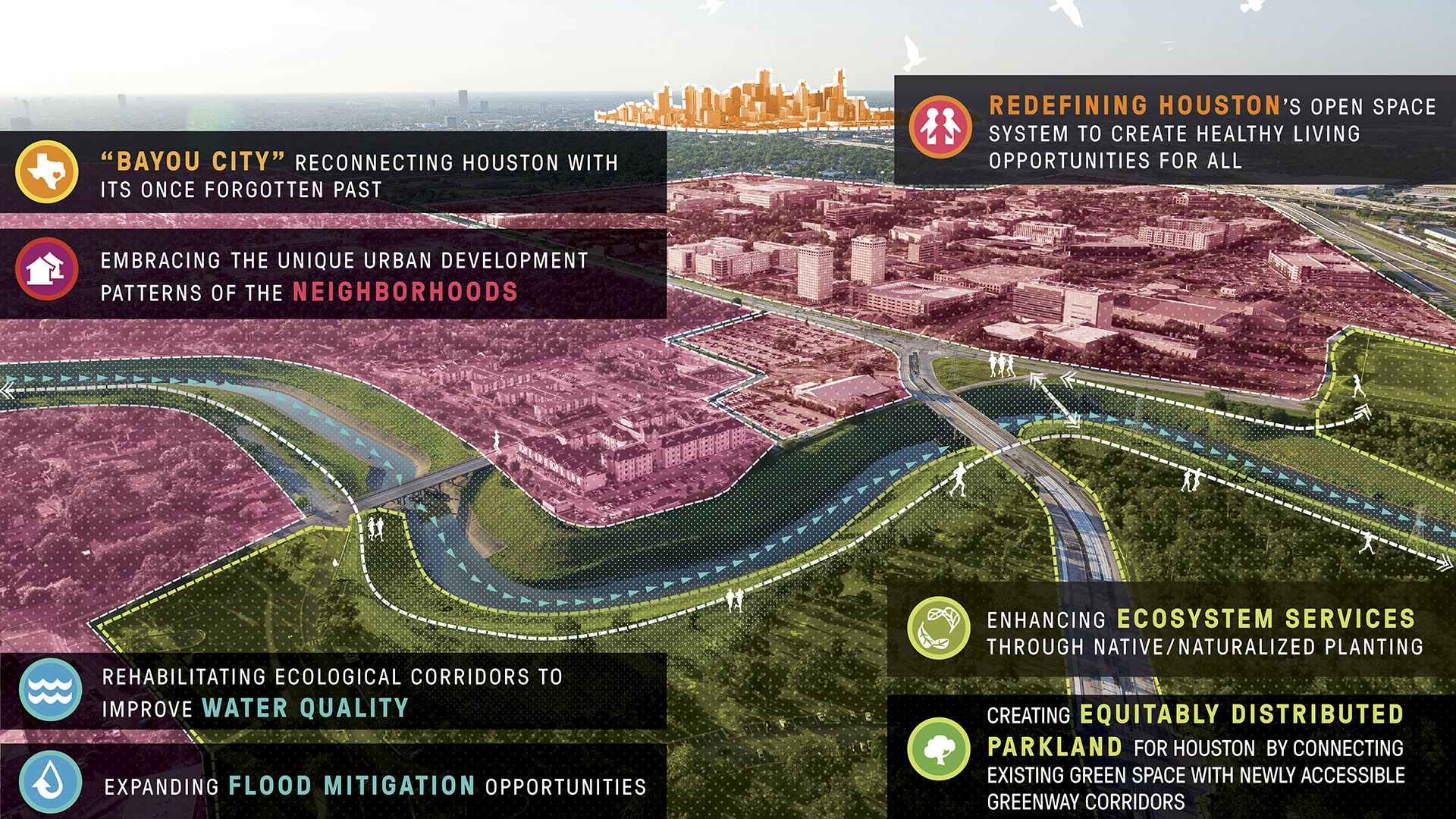As one of the largest U.S. cities, Houston’s sprawling, car-centric infrastructure is underpinned by a vast arterial system of over 2,500 miles of bayous—an untapped ecological feature that could redefine urban life.
Recognizing this potential, the Houston Parks Board worked alongside SWA to develop a visionary plan for nine central bayous as an interconnected park system, bringing 60% of Houstonians within 1.5 miles of green space.
The network was reimagined as a 3,000-acre greenway and blueway system linking neighborhoods with multimodal trails and restored habitat. Named Bayou Greenways, the master plan represented a shift in Houston’s approach to designing with water—framing it as a civic asset rather than a source of risk. The framework identifies opportunities to enhance ecosystem performance while reducing flood impacts on adjacent neighborhoods, carving out space for direct water access and alternate modes of transit.
The monumental task required a decade-long collaboration between the Houston Parks Board, City of Houston, Harris County Flood Control District, and numerous stakeholders. Beyond recreation, the Bayou Greenways initiative embodies a broader vision for living in Houston—prioritizing health, resilience, equitable access to open space, and authentic connectivity to the city’s natural heritage.
Main Street Garden Park
A key component in the downtown revitalization strategy, Main Street Garden Park required razing two city blocks of buildings and garages to make way for its transformation into a vibrant public space teeming with civic life. This two-acre park fosters downtown residential and commercial growth and was designed to accommodate the needs of residents in adjacent...
Lin'an High Tech Park
Lin’an Qingshan Lake Forest Technology Park offers a premier destination for high-tech and green-tech businesses. Designed in harmony with nature, this mixed-use community will foster productivity and connections to its physical and cultural setting, providing a vibrant mix of uses and a business culture appealing to a wide range of international enterprises. ...
Panyu Central Park
Panyu Central Park breaks the boundary of the traditional gated community and promotes sharing of open space among residents and visitors. This neighborhood development is the hub for a dense urban community, raising its visibility and value and setting a high standard for open space in the area. The park provides welcoming activity space for all ages with its...
Halperin Park
Halperin Park (previously known as Southern Gateway Park) caps Highway 35 in South Dallas directly adjacent to the Dallas Zoo and the Oak Cliff neighborhood. The park’s design effectively reconnects the neighborhood, which was cleaved by the highway’s construction many decades ago.
Recognizing the reunification’s significance, the cap park design introd...















